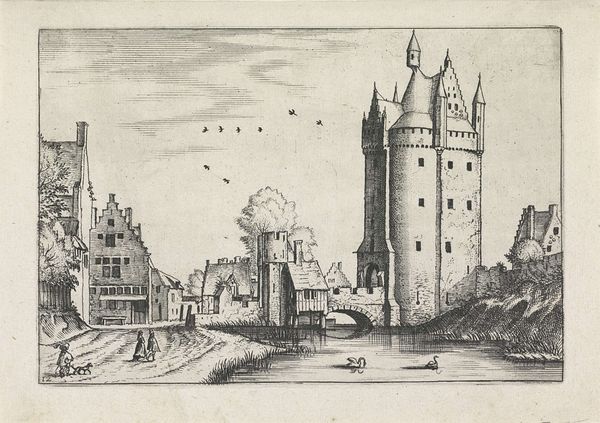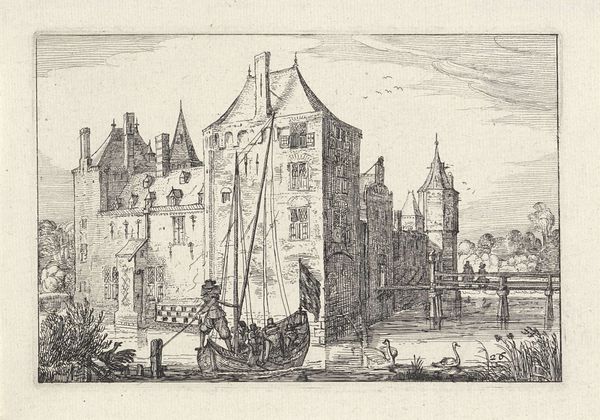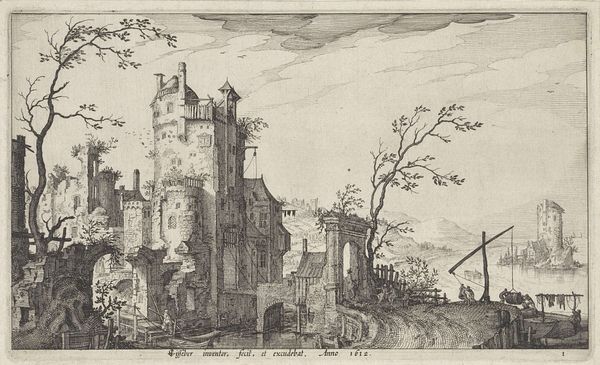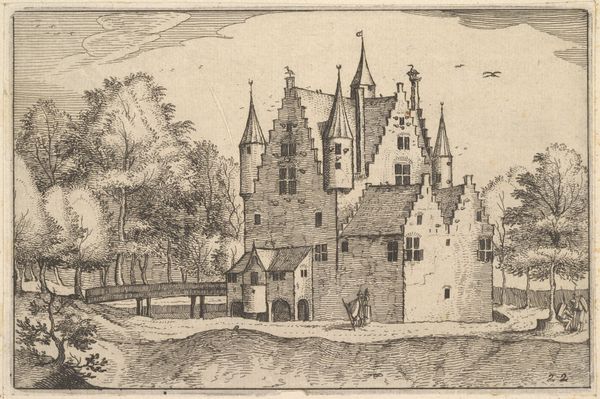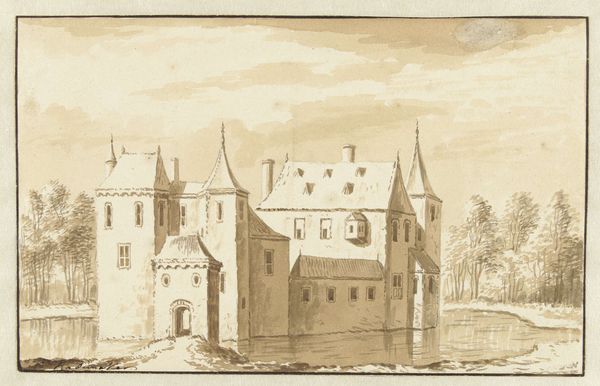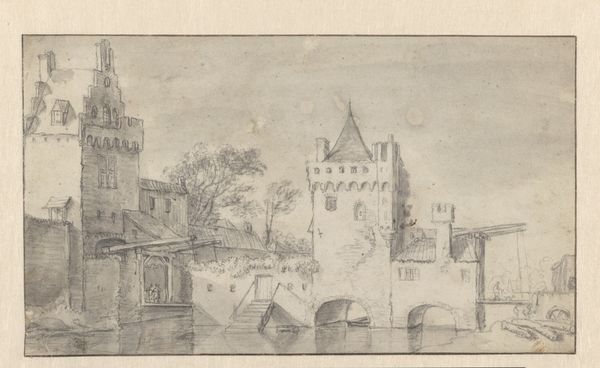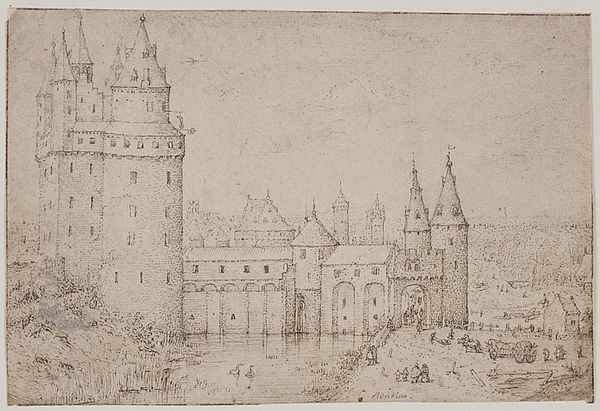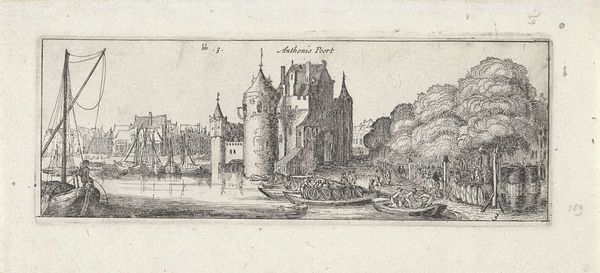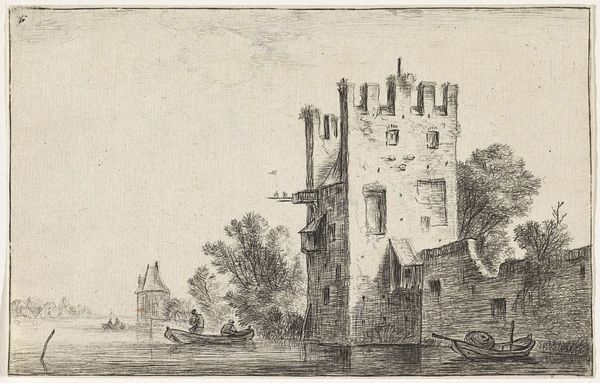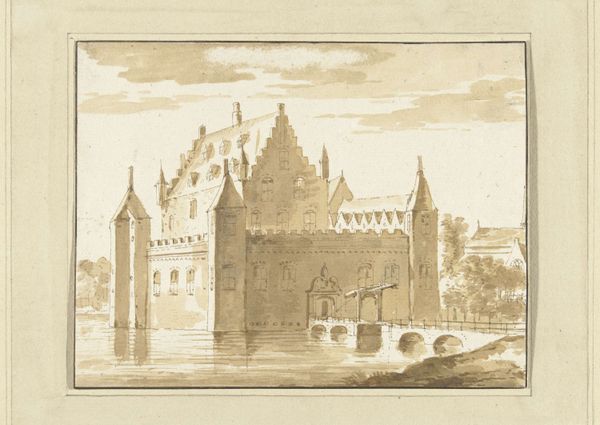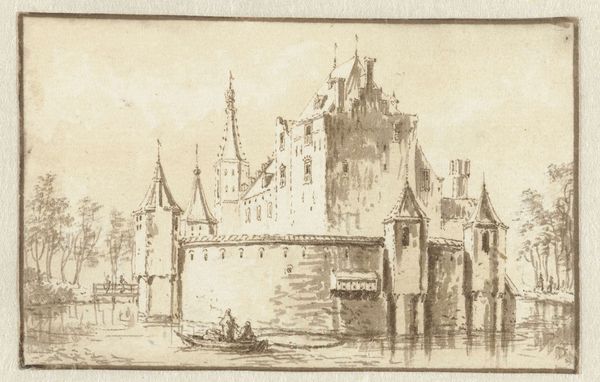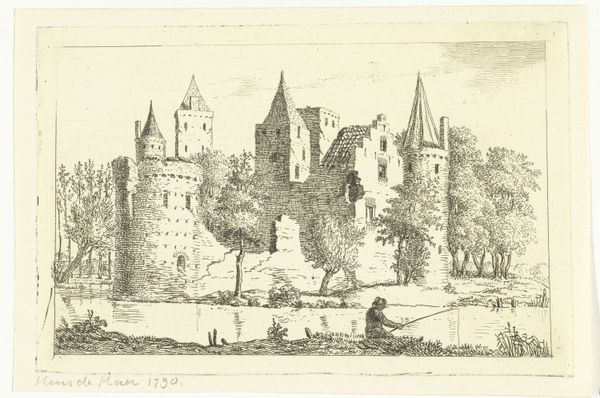
Town Gate, plate 2 from "Regiunculae et Villae Aliquot Ducatus Brabantiae" 1605 - 1615
0:00
0:00
drawing, print, etching
#
drawing
#
dutch-golden-age
# print
#
etching
#
landscape
#
cityscape
Dimensions: Sheet: 4 3/16 × 6 5/16 in. (10.6 × 16 cm)
Copyright: Public Domain
Curator: What an evocative scene. This is "Town Gate, plate 2 from 'Regiunculae et Villae Aliquot Ducatus Brabantiae'," an etching made sometime between 1605 and 1615 by Claes Jansz. Visscher. Editor: The immediate feeling is one of quiet industry. The lines are delicate but create a powerful sense of place; you can almost hear the water lapping against the stone walls and the calls of the birds in the sky. There is a beautiful peacefulness, a calm before something, a threshold of leaving or entering this place. Curator: It's fascinating to consider how such prints circulated in the Dutch Golden Age, shaping perceptions of space and belonging. Images like this weren't just aesthetic objects; they played an active role in defining regional identity, reinforcing notions of Dutch culture, particularly in relation to Brabant. These weren't objective renderings, but active constructions of "place" deeply interwoven with social and political currents of that time. Editor: I see that social tension subtly embedded in the work itself. The gate as a symbol, marks the boundaries between what's perceived as inside/outside, public/private. I’m struck by the imposing height of the tower. Is it there for beauty, defense, or perhaps as a statement about who controls entry? And what does that imply about the socio-political hierarchy in Visscher’s Brabant? It certainly isn’t some objective, neutral rendering of daily life. Curator: Precisely! Prints served as propaganda as much as art. By showing prosperous towns and fortified gates, artists like Visscher, or, more likely his publishers, sought to present an image of control and stability, influencing ideas of trade, migration, even warfare within this Dutch sphere. The choice of landscape—the pastoral scene alongside the imposing architecture—emphasizes control, literally "framing" ideas of order for public consumption. Editor: Framing is a great point to unpack. And the subtle suggestion of perspective, positioning us as viewers outside of this gate? It positions us, even today, as active participants in this visual game, prompting us to engage and negotiate our positions in this staged landscape. Even the medium of print implies access; many could circulate widely, but only among those privileged to consume such artworks. Curator: Ultimately, “Town Gate” asks us to reflect on how art functions beyond simple visual appeal; these types of cityscapes offer critical lenses to deconstruct power structures. They reveal social realities of the era in surprising ways. Editor: A compelling reminder to look beyond aesthetics and investigate these constructions, and their implications, deeply and intersectionally.
Comments
No comments
Be the first to comment and join the conversation on the ultimate creative platform.
